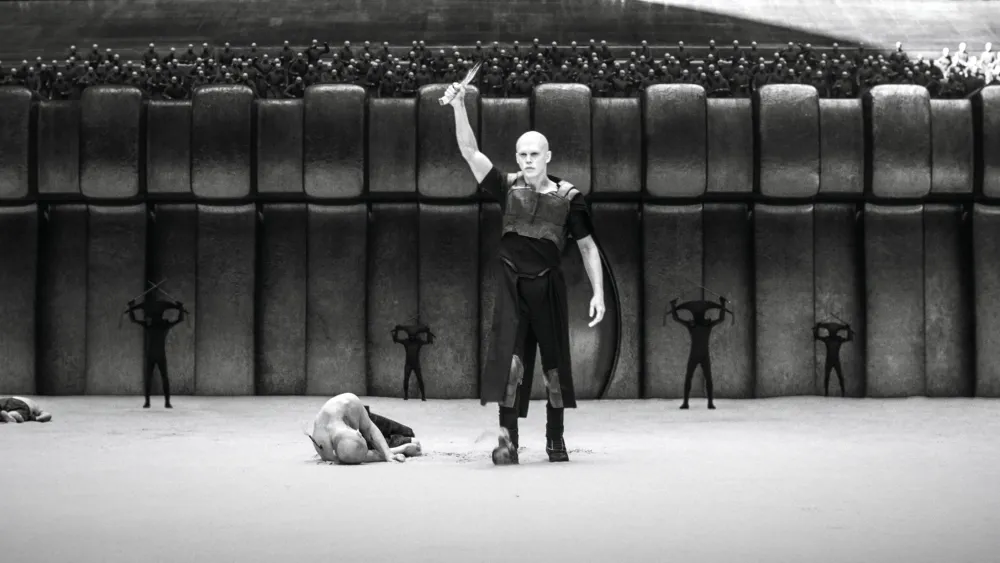“Dune: Part Two” not only continues the epic saga crafted by Denis Villeneuve but also elevates the cinematic experience with groundbreaking visual storytelling, particularly in the Harkonnen arena fight scene. This sequence, featuring Feyd-Rautha’s (Austin Butler) climactic battle, showcases an ingenious blend of infrared technology, costume design, and set construction, underlining Villeneuve’s vision of a monochromatic Giedi Prime.
The Infrared Vision of Greig Fraser
Cinematographer Greig Fraser, known for his innovative use of infrared lighting in “Zero Dark Thirty” and “Rogue One: A Star Wars Story,” brought this unique visual technique to “Dune 2.” Infrared lighting, invisible to the naked eye but capturable by specialized cameras, offered a way to distinctly portray Giedi Prime. Fraser’s application of this technology, modifying an Alexa LF camera to shoot exclusively in infrared, provided the scene’s ethereal and otherworldly aesthetic, aligning perfectly with Villeneuve’s directive to avoid the sandy visuals associated with Arrakis.
Costume Design Challenges and Triumphs
The infrared filming technique posed significant challenges for costume designer Jacqueline West. The infrared light transformed the appearance of certain fabrics, demanding a meticulous process of selection and testing to maintain the Harkonnen’s dark color scheme. West’s dedication to authenticity and detail led to the development of Feyd-Rautha’s outfit, which drew inspiration from H.R. Giger’s designs and medieval knights, blending modern materials with traditional elements to create a visually striking look.
Set Design: Crafting the Arena


Production designer Patrice Vermette played a pivotal role in realizing the arena’s physical manifestation. Drawing inspiration from an unexpected source—a field of black plastic septic tanks—Vermette conceptualized the arena’s design, focusing on the representation of the Harkonnen culture through color and material choice. The collaboration between Vermette and Villeneuve ensured the set not only served the narrative but also enhanced the visual impact of the infrared technology.
Editing and Sound Design: Shaping the Scene
Editor Joe Walker and the sound design team faced the task of piecing together this complex scene, which required extensive visual effects and creative sound choices to avoid modern-day sporting event clichés. The focus on chanting and stamping, recorded with the help of vocalists from the punk and death metal scenes, added a primal and immersive audio layer to the sequence, amplifying its intensity.
Wrapping Up
“Dune: Part Two” exemplifies the power of collaborative innovation in filmmaking, with the arena fight scene standing as a testament to the creative synergy between director, cinematographer, costume designer, production designer, and the entire crew. This sequence not only pushes the boundaries of visual storytelling but also deepens the thematic richness of the “Dune” saga, setting a new standard for cinematic artistry.
Visit HITPLAY for more insights into groundbreaking filmmaking techniques.
Source: Variety

